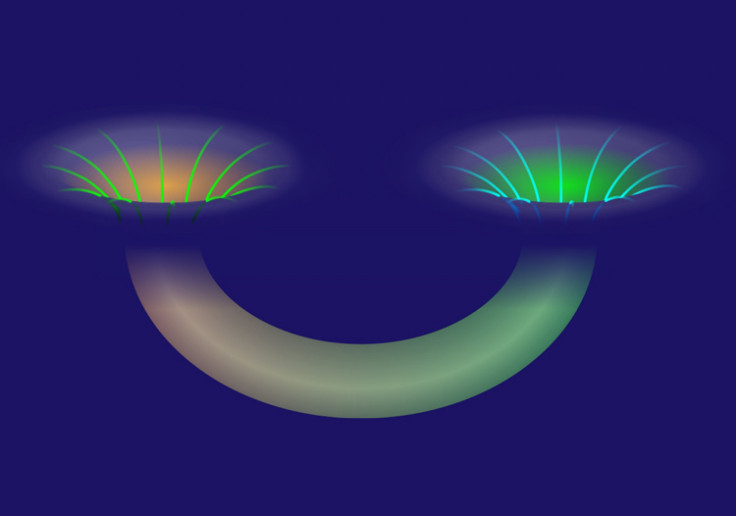What Is Quantum Entanglement? The 'Spooky Action' Of Quantum Mechanics Linked To Wormholes
Quantum entanglement is a rather weird theory of quantum mechanics, and new research is only adding more strangeness to the equation. Researchers from the Massachusetts Institute of Technology, Stony Brook University and the University of Washington believe quantum entanglement may be linked to wormholes.

Wormholes may be the one aspect of theoretical physics most people are familiar with, a hypothetical "shortcut" through space and time. Quantum entanglement is the hypothetical state of two linked particles. These entangled particles occupy multiple states of being at once, notes MIT. For examples, both particles could be spinning clockwise and counterclockwise, but once researchers observe one particle, their state becomes defined. The observed particle is spinning clockwise and the entangled particle will be observed to spin counterclockwise. If the observed particle's state changes, if it now spins counterclockwise, the entangled particle will change almost simultaneously.
Interestingly, this communication happens faster than the speed of light, hence the "spooky" part, according to the University of Washington. The new studies build off previous studies of wormholes, in which researchers suggested wormholes may be responsible for the communication between entangled particles. MIT cites a study, led by Juan Maldacena, from Princeton University, and Leonard Susskind, from Stanford University, that suggests that when two entangled black holes are separated they form a wormhole.
The MIT researchers, led by Julian Sonner, applied this theory to the creation of quarks, an elementary particle. According to Sonner's research, published in the journal Physical Review Letters, the creation of entangled quarks leads to the creation of a wormhole. The research is based on string theory, a theoretical framework that tries to resolve general relativity, things happening on a vast scale, with quantum mechanics, things happening on a very small scale.
Scientific American argues that, while it is interesting, the very theoretical nature of all of this puts a damper on the discovery. All of the discussion and conclusions are based on models and the holographic principle. As explained by Scientific American, the holographic principle "states that a quantum theory with gravity in a given space is equivalent to a quantum theory without gravity in a space with one less dimension that makes up the original space's boundary," leading to 3D projections without gravity that would be the same as 4D space with gravity. Due to the very nature of black holes, where nothing can escape their pull, communication or travel is impossible.
Andreas Karch of the University of Washington, whose work also was published in Physical Review Letters, says the findings indicate there are "two different mathematical machineries to go after the same physical process." The researchers are excited by these findings as it could lead to the long-sought resolution between quantum mechanics and Albert Einstein's theory of relativity, such as particles being able to communicate faster than the speed of light.
© Copyright IBTimes 2025. All rights reserved.






















